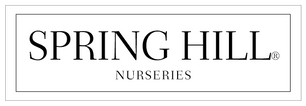Pruning Hydrangea Plants

Hydrangeas rarely need pruning, but can be pruned to achieve a desired shape or to promote healthy new growth. To understand how to prune hydrangeas, you'll need to determine whether your hydrangea plant blooms on old wood or new wood. Plants that bloom on old wood only flower on branches developed last season, so deadheading spent blooms at the tips of their canes is the best method of pruning for these types. Plants that bloom on new wood develop flowers on new growth, so they can be pruned heavily, if desired, for size and shaping purposes. Different types of hydrangeas have different pruning needs. After pruning, it's common for a hydrangea to quickly grow back to its former size, so keep that in mind when it comes to your garden space and schedule. We have included additional tips for pruning hydrangeas below.

Pruning Arborescens/Smooth Hydrangea/Annabelle type Hydrangeas
Arborescens, smooth, or Annabelle type hydrangeas, bloom on old and new wood. Late winter/early spring is the best time for pruning. Cut back to control the size or to shape the plant. Remove any damaged or crossed branches.
Pruning Paniculata Hydrangeas
Like arborescens, paniculatas bloom on old and new wood. Pruning hydrangeas in late winter/early spring is the best course of action for this species, and they should be cut back according to your desired aesthetics. Prune back for shape and size control, and to remove crossed and broken branches.
Pruning Macrophylla, Serrata and Oakleaf Hydrangeas
Macrophylla and serrata hydrangeas come with many common names. Macrophylla can also be known as big leaf hydrangea, like the Grin and Tonic™ Reblooming Hydrangea. The terms mophead and lacecap refer to the form of the bloom. Mophead and lacecap forms can be found in both the macrophylla and serrata species. Serrata hydrangeas are also called Mountain Hydrangeas.
Generally, these species should not be pruned, but if you are pruning, it is recommended these two species be pruned immediately after flowering, in order to avoid interrupting the blooming process for the following year. Many of these "old-fashioned" hydrangea varieties bloom on old wood, so you should trim only diseased and damaged branches for maximum flower production. Each year, keep the hydrangea's size in check by trimming branches back immediately after flowering. Prune no more than one-third of the cane. Flower buds for next year develop along the remaining portion of the cane. With these species, if you cut back canes harder, or prune them to the ground, you run the risk of severely reducing or eliminating altogether your blooms for next year. Do not prune out "dead" stems in the spring until the entire plant has leafed out and you are sure those canes are not viable.
There are varieties of macrophylla and serrata that bloom on new wood, but we still suggest pruning sparingly or not at all for maximum bloom impact. Prune out damaged, broken, or crossed branches.
If you're ready to get started growing these beautiful blooms in your garden, Spring Hill is here to help. Learn how to plant hydrangea and how to change the color of your hydrangea plants.
Have another question? Return to the Customer Service Help page or send an e-mail directly to Customer Service



